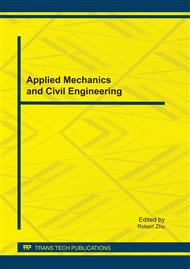[1]
Zhang Li, S.L. Gobbi, I.Norris, S.Zolotosky, K.H. Richter, Laser welding technique for Titanium alloy sheet. J. Mater. Process. Technol. 65 (1997) 203-208.
DOI: 10.1016/s0924-0136(96)02263-7
Google Scholar
[2]
T. TERASAKI and D. YAMAKAWA. Study of Welding Deformation and Welding Residual Stress Generated in Pure Titanium Joints. Welding International. (11) 17 (2003) 864-869.
DOI: 10.1533/wint.2003.3177
Google Scholar
[3]
Hsieh-Shen Hsieh, Jehnming Lin. Thermal-mechanical analysis on the transient deformation during pulsed laser forming. Int. J. Mach. Tool Manu. 44 (2004) 191-199.
DOI: 10.1016/j.ijmachtools.2003.10.003
Google Scholar
[4]
An.K.Kyrsanidi, Th.B.Kermanidis. Sp.G.Pantelakis. Numerical and experimental investigation of the laser forming process. J. Mater. Process. Technol. 87 (1999) 281-290.
DOI: 10.1016/s0924-0136(98)00367-7
Google Scholar
[5]
P.DONG. Residual stresses and distortion in welded structure: a perspective for engineering application. Sci. Technol. Weld. Joining. (4) 10 (2005) 389-398.
Google Scholar
[6]
P.Mollicone, D.Camilleri T.G.F. Gray,T.Comlekci. Simple thermo-elstic-plastic model for welding distortion simulation. J. Mater. Process. Technol.176 (2006) 77-86
DOI: 10.1016/j.jmatprotec.2006.02.022
Google Scholar
[7]
P. Mollicone, D. Camilleri, T. Gray. Procedural influences on non-linear distortions in welded thin-plate fabrication. Thin-walled structures. 46 (2008) 1021-1034.
DOI: 10.1016/j.tws.2008.01.044
Google Scholar
[8]
A.K. Dhingra, C.L. Murphy. Numerical simulation of welding –induced distortion in thin-walled structures. Sci. Technol. Weld. Joining. (5) 10 (2005) 528-536.
DOI: 10.1179/174329305x48301
Google Scholar
[9]
D. DYE, O. Hunziker, S. M. Roberts, R.C. Reed. Modeling of the Mechanical Effects Induced by the Tungsten Inert-Gas Welding of the IN718 Superalloy. Metall. Mater. Trans. A. 32A (2001) 1713-1725.
DOI: 10.1007/s11661-001-0149-z
Google Scholar
[10]
Wang Rui, Zhang Jianxun, Liang Zhenxin. Development of a Measurement System for Dynamic Welding Distortion and Temperature Cycle. Welding and Joining. 1 (2006) 27-31.
Google Scholar
[11]
Fang Hongyuan, Meng Qingguo, Xu Wenli,etc. New general double ellipsoid heat source model. Sci. Technol. Weld. Joining. (3) 10 (2005)361-36.
DOI: 10.1179/174329305x40705
Google Scholar


